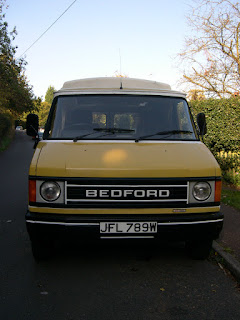"Classic 1981 Bedford CF Facelift 250 Camper Van Genuine Dormobile 3 Berth Pop Top Conversion. 8 Months MOT - Low mileage for year - only 88,612 =2,500 miles/year.
The van is in reasonable condition for a 35 year old vehicle as you can see from the pictures but is in need of some tlc.
It has all the usual campervan features:
Cooker; Sink; Water Tank; Electric Hook-Up; Huge Double Bed; 240V Lighting.
Good points:
Long MOT; looks ok from a distance; drives and stops; a very roomy van; fantastic 70s style Scoobydoo wagon (if you like that sort of thing); electric fuel pump fitted - starts every time!!!!; great rear seating arrangement; very comfy front seats
Not so good points:
Fridge has been removed (apparently a previous owner put in a standard electric domestic mains fridge and just plugged it into the mains socket!!) - Space and vent are there for a replacement 3-way campervan fridge; No leisure battery; Hook-up lead is missing; MOT advisory - some corrosion to rear wheel arch corners; Mechanically could do with a service; 3rd berth is a stretcher bed in the roof space which is fine for a child or very slim adult. Interior is rough and could do with a refurb. Some interesting hand painting around the roof guttering. Has got dings and dents as you would expect for a 35 year old large vehicle.
I bought this van as a running project but my wife hates it and have now bought something newer and more modern. I bought the van in June from an old guy of 86 who could no longer drive it - its heavy and does not have power steering. He told me that it had a replacement cam belt when he got it back on the road (I have the old one in a box). I reckon it had stood for some time before being put back on the road so I would suggest it would benefit from a good service.
It can be used as is or with a bit of time and effort turned into a really great looking van.
..."
Location: Welwyn, Hertfordshire, United Kingdom
Starting bid: £785.00 ...
Ebay item number: 151863602254




















